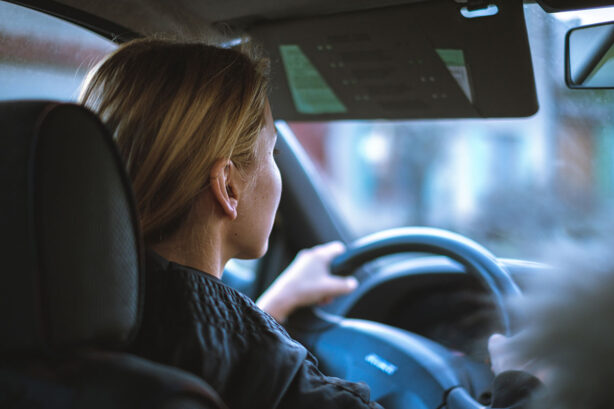There are some risks of driving that are especially dangerous for drivers of any age. For example, left turns are a risky scenario on roadways.
When making left turns, a driver has to assess traffic from multiple directions before determining when it’s safe to turn. Unsafe left turns are a common cause of accidents among all demographics.
There is a certain level of skill required to consistently make safe left turns. Often, teen drivers simply don’t have the experience needed for those more dangerous driving situations.

In 2020, according to data from the US Department of Transportation, over 2,700 teens in the U.S. between the ages of 13 and 19 were killed in car accidents. Around 250,000 were treated in emergency rooms for the injuries they sustained in car accidents.
Every day, based on these figures, around seven teens die because of car accidents, and hundreds are injured.
The risk of crashes is higher among people between 16 and 19 than in any other age group. Per mile driven, teens are almost three times as likely as drivers 20 and older to be in a deadly crash.
Male drivers are especially high-risk drivers based on statistics, and the crash risk is highest during the initial few months of having a license.
Teen drivers are more likely than drivers who are older to underestimate or not be able to identify dangerous situations.
When someone is a younger and less experienced teen driver, they’re also more likely to make decision errors leading to dangerous crashes.
If you have a teen driver in the house, make sure to talk with them about the risks of driving, and these specific dangerous driving situations that could put them at risk of an accident:
Distracted Driving
No matter your age, distracted driving is incredibly risking. And teens tend to be more likely to get distracted, whether by using their phones, changing the music, putting on makeup, or talking to their passengers.
When your brain is putting attention and focus on anything besides driving, it’s hard to react during a possible crash. This is especially true for a teen driver that doesn’t have as much driving experience.
For parents, it’s important to enforce limits on passengers for a teen with a new license. Two or more passengers who are peers with a teen driver more than triple the risk of a deadly crash.
Always encourage your teen to stay fully engaged mentally and physically when behind the wheel.
Extra passengers create such a big risk for teens that some states and provinces have even set laws limiting the number of non-family members allowed in vehicles for new drivers.
Panicking and Overcorrecting
When teen drivers are facing a potential crash or emergency situation, they’re significantly more likely than experienced drivers to overcorrect or oversteer.
Crash involvement because of oversteering or overcorrection decreases as the driver’s age increases.
Overcorrecting occurs when a driver abruptly steers their wheel more than what’s needed or expected. The wheel is typically steered in the opposite direction to the vehicle’s direction, and that can lead to loss of control.
This generally happens as a result of reacting to something unexpected, like an animal running into the road, or a car losing control ahead of your teen’s vehicle.

Driving at Night
The most severe crashes involving teen drivers tend to happen at night.
Night is a more risky time to be on the road because the visibility is limited, people are more tired, and the chances of encountering an inebriated driver increase.
In many states and provinces with graduated licensing programs, teens can’t drive during certain evening hours.
If you’re the parent of a teen driver, consider limiting their nighttime driving, even if their license doesn’t require it. Ideally, ensure they’re home by sundown.
Bad Weather
What qualifies as bad weather for drivers can vary quite a bit depending on location and experience.
Pouring rain, icy roads, blowing snow, wind, and even sun that’s too bright can all contribute to accidents, especially for inexperienced teen drivers.
Ideally, you should ensure your teen stays off the road during especially bad whether. But they also need to be prepared for dealing with bad weather that occurs unexpectedly.
Minimizing the risks of driving in bad weather generally requires adjusting driving speed to ensure that your teen can recognize hazards and stop safely.
Teach your teen driver to be especially cautious at intersections when the weather is poor, since even when they have the right-of-way, other vehicles may be struggling in the poor weather as well.
Driving Under the Influence
Driving while under the influence of drugs or alcohol is potentially deadly for everyone, regardless of their age and level of driving experience.
For teens, who lack experience and also tend to have a lower tolerance for drugs or alcohol, driving under the influence can come with an especially high risk of being involved in a severe or deadly accident.
In fact, young drivers between 16-20 are 17 times more likely to die in a car accident if their blood alcohol level is 0.8% or higher.
As a parent, one of the most important lessons you can teach your child is to always be completely sober when driving, no matter what.
Make sure your teen driver knows that instead of getting behind the wheel, they can call you for a ride or take a cab home if they have a drink.

Parental involvement can make a big difference when it comes to helping your teen driver deal with the risks of driving.
Make sure to sit down with your teen and discuss these dangerous driving situations and how to react to them.
Just as you talk with them about the dangers of vaping or using drugs, talking about the potential dangers of driving can help them know what to watch out for, and what situations to avoid.
When they’re armed with knowledge about potential driving risks, they’ll be in a better position to drive safely and build up the experience they need.
